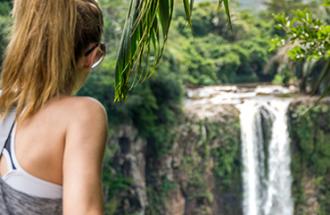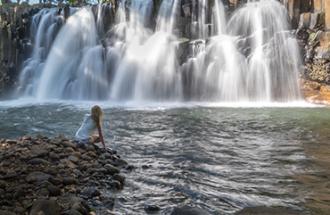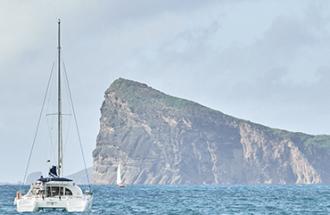TOP 10
Mauritius is considered the dreamed destination by many with its heavenly beaches and turquoise waters. This small gem in the middle of the Indian Ocean hides far more treasures that deserve to be discovered during your family vacations. The population, its history, cuisine, culture and nature are just some of the facets that make the island unique and rich. Here is a Top 10 of the things to do and see, to bring back home unforgettable memories from your stay in Mauritius.
1. People, the heart of Mauritian hospitality
As soon as you set foot on Mauritian land, one thing will strike you: the people. With their spontaneous smile, you will instantly feel welcome. This warm attitude is rooted in the people of Mauritius who are the result of an extraordinary mix of cultures, religions and ethnicities. Here, it is these differences that unite people and make their strength. All the communities live in harmony by nurturing their own culture and heritage, and sharing them with visiting guests. The reputation of Mauritian hospitality is not overrated!
If you want to understand and discover Mauritius, it is essential to mingle with its inhabitants. A stroll through the heart of the towns and villages, a stopover in shopping centres, or a day at the beach to meet the picnickers, mainly on Sundays, are among the activities to be preferred. You can also contact local operators for guided tours. Party-goers will be able to meet locals in night clubs, especially during weekends when night life is more active. Spontaneity, hospitality and sharing are what you will bring back from your foray into authentic Mauritius.
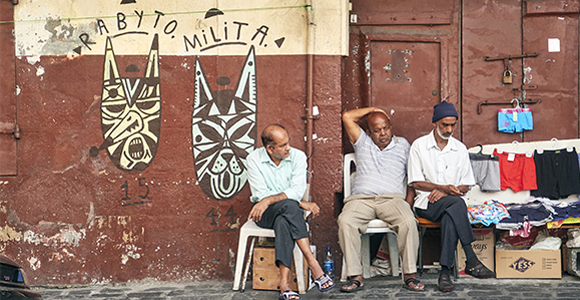 |
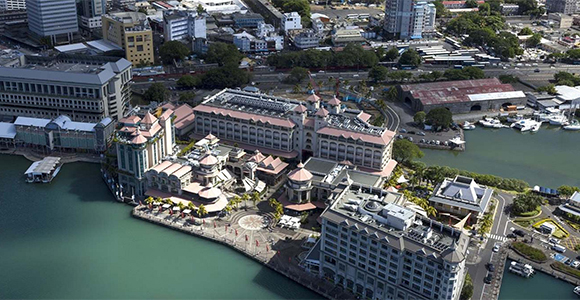 |
2. Port-Louis, the vibrant capital city
Port-Louis, the capital of Mauritius, is a must when you stay in the island. Port-Louis is a colourful city steeped in history and culture, where every corner reveals something different, a scent, a style, a period, and above all, the diversity of the Mauritian population. It is the city where the ancient and the modern meet.
The first thing that will strike you when you arrive in the capital is the Caudan Waterfront, a modern complex which houses shops, restaurants, cinemas, a museum, and a multipurpose entertainment centre. You can also leave your car there before beginning your expedition on foot in the heart of the old town. Start with the market. Take in the scent of fruits, vegetables and spices, appreciate the burst of colours, especially in summer, and don’t hesitate to taste exotic flavours, it’s a real journey for the senses… The stallholders will seduce you with their unparalleled glibness. Then, head to the centre of the capital city.
As you walk along, you will come across some small paved streets, dating back to the 18th century during the French period. Port Louis is also a reflection of the local population, with its mosques, Chinese pagodas and churches, all equally interesting in terms of architecture and history; feel the serenity that emanates from these places. As you wander the streets, let yourself be tempted by the many restaurants and snacks along your way, and taste Mauritian street-food: dholl puris, faratas, chili cakes, “mines bouilli” boiled noodles, “boulettes” dumplings, Alouda… A burst of flavours!
Shop addicts will be surprised by all that can be found in the hundreds of shops located there: clothes, fabrics, jewellery, toys, souvenirs… Do not hesitate to go deep into the maze of shops, and take the time to discuss with the sellers, they will be happy to share with you their culture. The culture of Mauritius also includes horse races which are held every Saturday and which have become for some, the unmissable weekly rendezvous. The Champ de Mars where these races are held, the oldest racecourse in the southern hemisphere, is also to be seen, and if you have the opportunity, try the experience of a day at the races.
To learn more about the history of the island, visit the Natural History Museum, followed by a stroll in the peaceful Jardin de la Compagnie, the garden next to the museum. A little further on, on Vieux Conseil Street, the Photography Museum is worth the visit with the history of photography in Mauritius. At Caudan Waterfront, you can also pop in the Blue Penny Museum, also rich in Mauritius' history.
Port-Louis seen from above is also fascinating. To gain height, the two sites that come to mind are the Citadelle and the monument of the Marie Reine de la Paix. The Citadelle, also known as Fort Adelaide, built during the British era in the early 19th century on top of a hill near the Champ de Mars, offers a beautiful panorama of the capital. The monument of the Marie Reine de la Paix, a place dedicated to the Holy Virgin by the Catholic community, is located further south at the foot of Signal Mountain; it gives a different but equally enjoyable view.
3. The idyllic beaches
The beaches of Mauritius are evocative of dream, escape and heat. They are the typical dreamed getaway for many continental inhabitants. The island is surrounded by beautiful white sandy beaches and cliffs that offer, together with the blue lagoon, an extraordinary scene that varies according to the seasons and the time of the day. The coastal landscapes also change according to the region, they are nothing alike. Holidaymakers often choose their accommodation according to the beaches nearby.
In the North, more touristic, the calm and sheltered lagoons call for relaxation and lay back, with a pleasant temperature all the time. The beaches of Péreybère and Mont Choisy are the most popular. In the Wild South, the south-west wind blowing more or less strongly all year round, makes the waves dance endlessly. The southern landscapes are unique, with impressive basaltic cliffs flowing into the ocean. This part of the island is not recommended for swimming, with the exception of some beaches such as Blue Bay, which is also a protected marine park.
The east coast features a long stretch of beautiful sandy beaches, but it is also the windiest part of the island, especially in winter. One of the most popular beaches, Belle Mare, is also one of the longest beaches on the island. Ile aux Cerfs, an isle set in the lagoon a few minutes by boat from the coast, is one of the most visited sites by tourists. You can organise a day on the island at your hotel or directly on site, with local operators. And finally, the west and south-west region, with its warm and dry climate, is more popular for water activities such as kitesurfing, surfing or deep-sea fishing. Le Morne beach at the foot of the mountain of the same name, is ideal for a picnic and a swim. And why not take the opportunity to climb this stunning mountain, a UNESCO World Heritage site and climb to the top to enjoy the unique panorama?
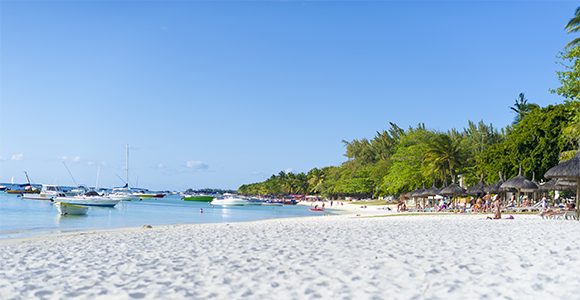 |
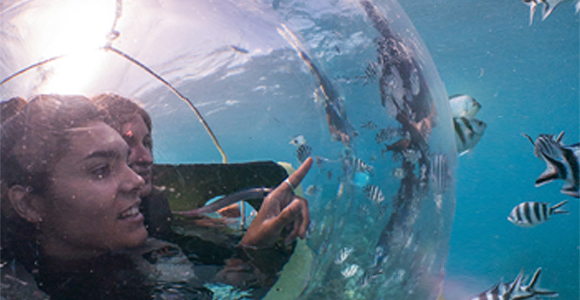 |
4. Water Activities
Mauritius is an island, and practising water sports is a must. Whatever your age or fitness level, you will surely find an activity that will suit you. Most hotels in Mauritius offer very accessible activities such as pedalo, kayak, stand-up paddle, and glass-bottom boat. A lot of operators will also cater for more specific outings such as a catamaran outing during which you can see dolphins or big-game fishing. For the more daring, there is the submarine ride, the undersea walk, the underwater scooter and the parasailing that will make you get up in the air, just before falling back into the lagoon.
Mauritius is also renowned worldwide for its diving and kitesurfing spots by both professionals and amateurs. There are various types of diving activities for sea lovers of all levels. The marine parks of Blue Bay and Balaclava are to be seen by snorkelling enthusiasts, and those who practise free or bottle diving, will be delighted to discover all the intriguing spots around the island. You will easily find recognized and certified diving centres in some hotels and in the coastal regions. Kite surfers will choose the lagoons of the southwest and southeast.
5. Sega
In Mauritius, the Sega reflects a whole culture that vibrates to the sound of music. One cannot resist its frenetic rhythm produced by the locally made traditional instruments. Sega dancers move in cadence, dressed in beautiful colourful skirts, accompanied by their partners also wearing typical costumes. It is a must, you have to learn to dance Sega during your stay!
More than only a local traditional music, Sega has today the status of cultural heritage of the UNESCO. Originally sung and danced by slaves, it is now part of Mauritian life and heritage, and continues to echo in the hearts of people thanks to the triangle, the maravanne, the ravanne and the djembe, the typical instruments, sometimes modernised by some artists. Ti Frère, Serge Lebrasse and Luc Legris are among the pioneers of Sega in Mauritius. The lyrics, written in Creole, are always very colourful and touch the soul as they express life, heartaches, uprooting, and love. A CD could be a very good idea for a souvenir gift for friends or just to enjoy back home
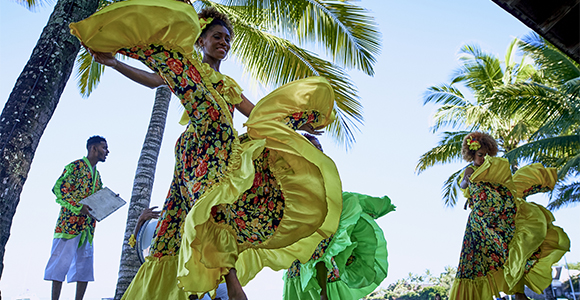 |
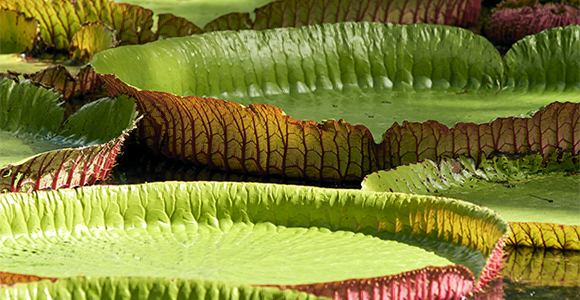 |
6. Pamplemousses Botanical Garden
Pamplemousses Botanical Garden, or Sir Seewoosagur Ramgoolam Botanical Garden, is one of the most visited sites in Mauritius, and the oldest in the southern hemisphere. Created under the management of Mahé de Labourdonnais by the king’s intendant, Pierre Poivre, more than 300 years ago, the garden houses an extraordinary flora with a myriad of native and endemic plants. Animals have also taken up residence there: turtles, deer, and birds of all species. For nature lovers, Pamplemousses garden is the ideal place to stroll with the family or your partner along the paths bordered with greenery. You might get a chance to see a Talipot tree blooming – it only happens every 30 to 80 years, before the tree dies. The famous ponds with giant water lilies are also worth a visit, perfect place to take some souvenir photos…
Take the time to make a small expedition in the village of Pamplemousses after your visit to the garden, and see the oldest church of the island still standing, St Francis of Assisi, with its unique architecture in Mauritius, and other vestiges of the French period in Mauritius.
7. The 7-Coloured Earth in Chamarel
Another key attraction of Mauritius is the Seven-coloured Earth located in the heights of Chamarel. An unexpected site formed by a geological phenomenon that gave to the earth a palette of seven colours. This unique place deserves to be seen. Nearby, you will be amazed by the view of the Chamarel waterfall from the view point. If you’re lucky, you will see monkeys or the elegant Mauritian Tropicbird. Parks and nature reserves are also within easy reach, such as Ebony Forest or Lavilleon Park, where you can recharge your batteries and learn more about Mauritian nature, while the more adventurous will try some supervised open air activities.
Chamarel is one of the places that reflect the authenticity of Mauritius. It is a quiet small village located on high ground. Take a walk, visit the small church of Saint Anne, meet small coffee producers from the village and try one of the local restaurants that offer typical Mauritian cuisine. Then, head south towards Le Morne beach, or the central plateau, towards Plaine Champagne or the towns.
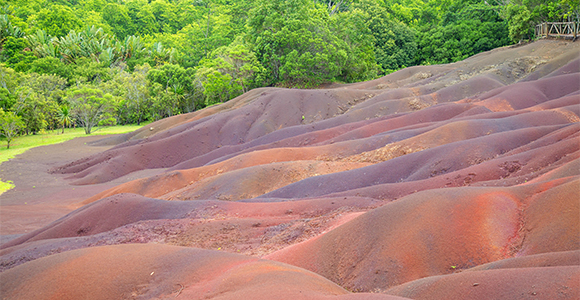 |
 |
8. Sugar, rum and tea, Mauritian specialities
Sugar and tea have been two of the most flourishing industries in Mauritius for a long time, and still have a privileged place in the country today, even if these sectors are no more considered as pillars of the Mauritian economy. The plantation of sugar cane, introduced by the Dutch, has greatly decreased during the recent decades, same for tea. Yet, these two products are still very popular among locals as well as tourists. Rum, produced from sugar cane juice or molasses, now also forms part of the island’s flagship products.
In Pamplemousses, L’Aventure du Sucre, a former sugar factory converted into a museum, features a beautiful pedagogical tour on the history of cane sugar in Mauritius. The shop will enchant you with all its sweet treats and other souvenirs to bring back in your luggage. Stop for a rum tasting, followed by a gourmet break at the museum’s restaurant before continuing your tour.
The Tea Route, in the southern part of the island, will immerse you in the history of this delicious beverage through several sites. You will visit the tea plantations, the factory and museums. Tastings are also on the menu, and you can bring home various flavours of teas and unexpected by-products such as tea chutney!
9. Historical Heritage
With its rich history, Mauritius abounds with vestiges of its different colonial eras. In Port Louis, several buildings will appeal to you like the Government House, built in 1738, facing the harbour, the splendid Port Louis Theatre, one of the first to be built in the southern hemisphere, the Central Post Office, all in stone, next to the harbour, the building of the Supreme Court and next to it, the ancient prison. Also in the capital city, there is the Aapravasi Ghat which saw the landing of the first Indian indentured labourers in the 19th century, and which forms parts of the UNESCO World Heritage list.
The south-east of the island is also home to a concentration of historical remains, especially from the time of the Dutch who landed at Vieux Grand Port in the 17th century; there, you will discover the Frederik Hendrick museum and the ancillary ruins. In Mahebourg, the Naval Museum should as well be added to your list. Le Morne Mountain and its region, in the southwest, are inscribed on the UNESCO World Heritage list for their historical value from the time of slavery. A memorial site displaying art pieces has been set up at the foot of the mountain and is open to the public.
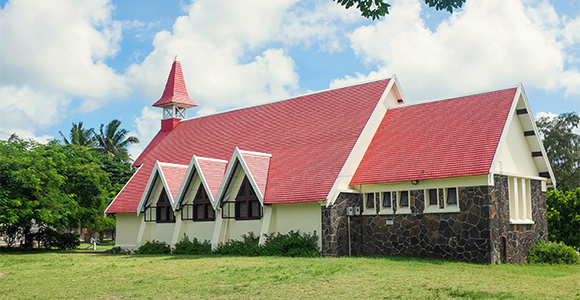 |
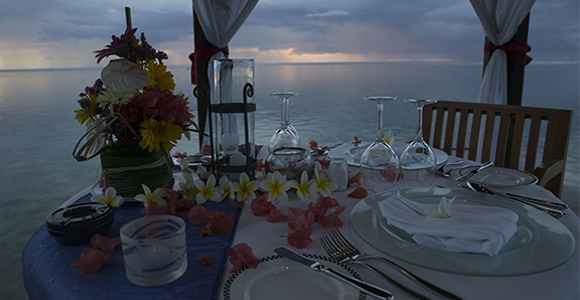 |
10. A culinary melting pot
An island with so many different cultures can only offer an extraordinary culinary richness. Mauritian cuisine is indeed rich from its origins and its blending. On every table in Mauritius, whether in a hotel or at home, you will taste flavours that may remind you of other countries, but that are unique to Mauritian culture. The dishes are rather spicy, but very tasty and suitable for foreign guests, most of the time.
If you want to have a more authentic experience of Mauritian cuisine, you must try its street-food. It is found everywhere, from street corners to markets or shopping malls: dholl puris, chili cakes (“gateaux piment”), samoussas, dumplings (“boulettes”), bryani, or fried noodles… Food forms part of our lifestyle in Mauritius!
Hotels offer more and more themed evenings where you can taste these delights during your holidays in Mauritius. Food festivals are also held throughout the year, such as the China Town culinary festival, which focuses on Chinese-Mauritian cuisine, and the Port-Louis bread festival, among others.


